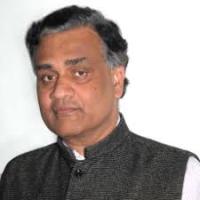
This piece was first published on The India Cable – a premium newsletter from The Wire & Galileo Ideas – and has been republished here. To subscribe to The India Cable, click here.
The January 22 consecration of the Ram Temple will take place exactly at the same place in Ayodhya where the 500-year-old Babri Mosque was demolished on December 6, 1992. Ironically, the Supreme Court, while allowing construction of the temple on that spot, had held that the mosque’s demolition was an egregious violation of the rule of law.
Swami Vivekananda, Rabindranath Tagore and – above all – Mahatma Gandhi would have been deeply anguished and ashamed to see the lofty ideals they advocated now being contravened through the consecration of a temple.
Gandhi’s vision of temple consecration
Eighty-five years ago, on March 18, 1939, Gandhi inaugurated the famous Lakshmi Narayan Temple (popularly known as the Birla Mandir) in Delhi, and explained to the huge crowd gathered there the meaning and significance of a temple in terms of respecting religious pluralism and rejecting communal hatred.
“It must be the daily prayer of every adherent of the Hindu faith,” said Gandhi, “that every known religion of the world should grow from day to day and should serve the whole of humanity.” Explaining the significance of shrines, he fervently expressed optimism by saying, “I hope that these temples will serve to propagate the idea of equal respect for religions and to make communal jealousies and strife things of the past.”
Can the “egregious violation of the rule of law” – represented by demolishing the Babri Mosque and consecrating a temple in the exact same place – ever be in tune with Gandhi’s aforementioned vision?
Vivekananda’s pride that Hindus built shrines for people of other faiths
Much before Gandhi articulated those lofty utterances, Vivekananda delivered a speech in Madras in 1897 after returning from his historic visit to America, where he participated in the World Parliament of Religions, among other events. He took pride in the fact that “it is here in India that Hindus have built and are still building churches for Christians and mosques for Mohammedans.”
What he said represented the practical ideals of universal toleration and acceptance. In fact, he went on to add, “The world is waiting for this grand idea of universal toleration.” He firmly asserted, “No civilisation can grow unless fanaticism, bloodshed and brutality stop. No civilisation can begin to lift up its head until we look charitably upon one another; and the first step towards that much-needed charity is to look charitably and kindly upon the religious conviction of others.”
Vivekananda proceeded further: “Nay more, to understand that not only should we be charitable, but also positively helpful to each other, however different our religious ideas and convictions may be. And that is exactly what we do in India as I have just related to you. It is here in India that Hindus have built and are still building churches for Christians and mosques for Mohammedans. That is the thing to do.” These words form part of his book, Lectures from Colombo to Almora.
Those controlling the state apparatus in India today often invoke Vivekananda. But they should be mindful of his stirring words, which assume greater relevance in the context of the forthcoming consecration and the mindless religious frenzy being generated all around that puts the values of religious tolerance at stake.
Tagore’s poem on a temple
Had Tagore been alive now to see the Ram Temple’s consecration in Modi’s Naya Bharat, he would have recited his poem, ‘Deeno Daan’, composed in 1923. His rhythmic lines serve as a conscience-keeper for the nation and for Hinduism.
Through his poem, the poet interrogates a king through a saint and boldly denies the presence of God in a shrine consecrated by the king. Tagore’s stanza is worth reproducing.
“There is no god in that temple”, said the Saint.
The King was enraged;
“No God? Oh Saint, aren’t you speaking like an atheist?
On the throne studded with priceless gems, beams the golden idol,
And yet, you proclaim that it is empty?”
The saint persisted in telling the truth and asserted,
“It’s not empty; rather, it is full of royal pride.
You have bestowed yourself, oh King, not the God of this world”.
The saint spoke the truth in the face of the king’s anger and boastful claims that he spent two million gold coins in building the sky-high temple and consecrating it after performing all rituals. The saint, with composure, told the truth to the powerful king that the temple was built when millions suffered due to drought and became pauperised without food and shelter. The king’s empty religiosity, devoid of any traces of spirituality, enraged God, who responded by outlining the basic elements of his shrine. As Tagore puts it in his stanza:
“My eternal home is lit by everlasting lamps,
In the midst of an azure sky,
In my home the foundations are built with the values:
Of Truth, Peace, Compassion and Love.
The poverty-stricken puny miser,
Who could not provide shelter to his own homeless subjects,
Does he really fancy he can give Me a home?”
The enraged king banished the saint who upheld the true values rooted in charity and empathy to look upon all faiths as done by Vivekananda, and later, Gandhi. That is the true meaning of the consecration of a shrine or temple devoid of the pride and grandstanding of a ruler.
Is it beyond the capacity of our rulers to learn these lessons from Vivekananda, Tagore and Gandhi?
S.N. Sahu served as an officer on special duty to President K.R. Narayanan.






